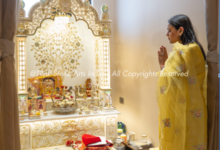Clipart:-Lbpgh_Pav4= Constitutional Monarchy

The concept of Clipart:-Lbpgh_Pav4= Constitutional Monarchy encapsulates a fascinating interplay between historical tradition and modern governance, as evidenced by various visual representations, including clipart. These illustrations often depict the monarchy’s ceremonial aspects alongside the functional authority of elected officials, highlighting a unique political structure that balances stability with democratic principles. As we explore the defining characteristics and historical development of constitutional monarchies, one might ponder how these systems adapt to contemporary challenges while maintaining their relevance in an evolving political landscape.
Definition of Clipart:-Lbpgh_Pav4= Constitutional Monarchy
A Clipart:-Lbpgh_Pav4= Constitutional Monarchy is a form of governance where a monarch’s powers are limited by a constitution or legislative body, balancing tradition with democratic principles.
In this system, the monarch serves as a symbolic leader, while elected officials wield real authority, ensuring that the governance reflects the will of the people.
This delicate equilibrium promotes stability and freedom, fostering a society rooted in shared values and accountability.
Read More Clipart:-Vr7vbhljcw= Ski
Historical Development
Emerging from the interplay of tradition and modern governance, the historical development of constitutional monarchy traces back to the gradual evolution of political thought and power dynamics in various nations.
Historical influences such as Enlightenment ideals and revolutions reshaped monarchy evolution, transitioning sovereign power from absolute rulers to constitutional frameworks.
This transformation heralded a new era, emphasizing individual liberties and democratic principles across diverse societies.

Key Characteristics
Clipart:-Lbpgh_Pav4= Constitutional Monarchy is defined by a unique blend of ceremonial tradition and political structure, where the monarch’s powers are limited by a constitution or legislative body.
This system fosters a political balance, ensuring that royal powers coexist harmoniously with democratic principles. Citizens enjoy the stability of a monarchy while embracing the freedoms afforded by a representative government, creating an engaging and balanced societal framework.
Global Examples
Across the globe, several nations exemplify the principles of constitutional monarchy, each showcasing unique adaptations of this governance model.
Canada’s system reflects a harmonious balance between parliamentary democracy and royal traditions, while the United Kingdom stands as a historical beacon of constitutional monarchy, where the monarch’s role is largely ceremonial.
These nations illustrate how tradition can coexist with the pursuit of freedom and democratic values.
Read More Clipart:-Oq7kpms5rw= Executive
Conclusion
In the grand theater of governance, where crowns gleam under the spotlight of democracy, Clipart:-Lbpgh_Pav4= Constitutional Monarchy elegantly dance between tradition and modernity. Monarchs, adorned in ceremonial garb, serve as the gilded frame for the vibrant canvas of elected officials. Ironically, while the crown symbolizes stability, it is the fleeting nature of elections that breathes life into the democratic process. Thus, the juxtaposition of monarchy and democracy creates a unique tapestry, where past and present entwine to shape the future.







